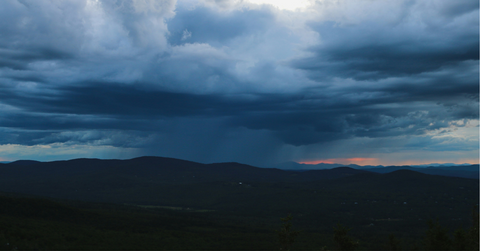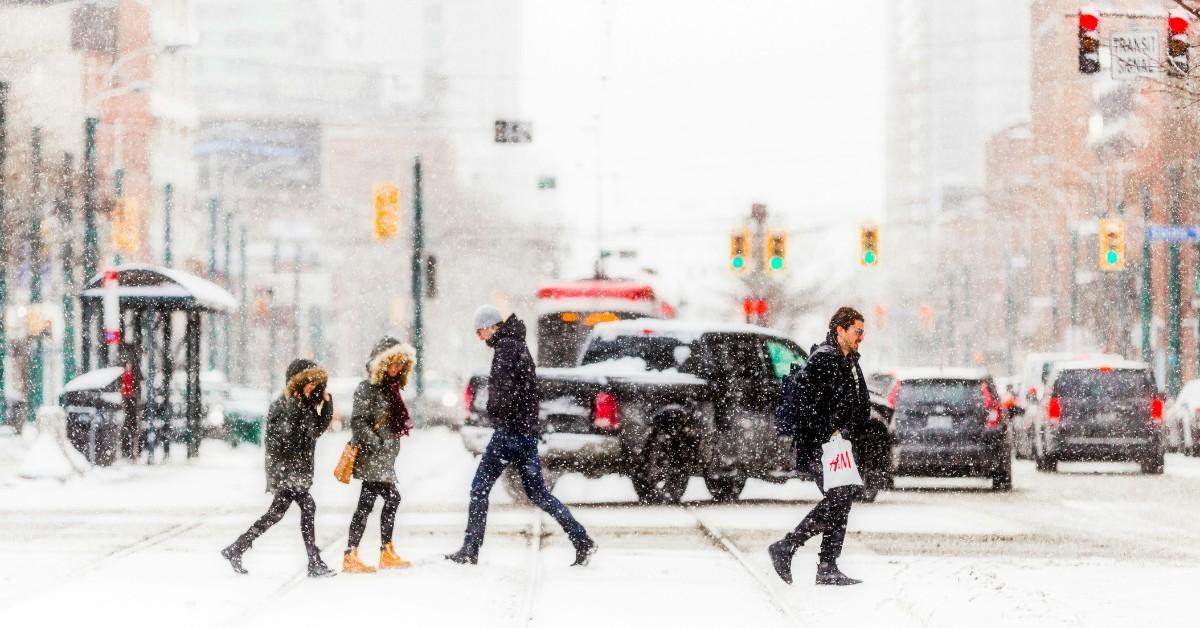What Is A "Bomb Cyclone"? Why This Nightmarish Weather Alert Is No Joke
A bomb cyclone can cause rapidly changing conditions in a storm system.
Published Nov. 19 2024, 1:34 p.m. ET

Regarding inclement weather, certain terms on the news can instantly raise alarm because of the conditions we associate with them, like tornadoes, hurricanes, and thunderstorms. However, due to the continued worsening of natural disasters thanks to climate change and a warming planet, there might be some meteorological terms you're unfamiliar with that are now becoming commonplace.
Terms like bomb cyclone, for example, might leave people with more questions than answers.
So, what is a bomb cyclone? And what conditions can you expect when you hear that one is coming your way? Keep reading to find out more about the meteorological term, including information about some of the other words that are commonly used alongside the phrase.

What is a bomb cyclone?
A bomb cyclone happens within a low-pressure storm system that rapidly intensifies. That rapid intensification is usually responsible for bringing some significant precipitation, which can occur in the form of snow or rain, according to Weather.
While the explosive name is definitely eye-catching, there's actually a really good reason why we use this term. The name "bomb cyclone" comes from the meteorological name for the process, bombogenesis.
Bombogenesis happens when a storm system's central pressure drops by at least 24 millibars in 24 hours. These quick and unpredictable changes can turn a seemingly benign storm into a beast, creating nor'easters, blizzard conditions, and even causing flooding.
The precipitation isn't the only thing people in the path of a storm undergoing bombogenesis have to be aware of, explains Weather. These storms are also known for producing intense wind gusts that can reach over 50 miles per hour.
That's strong enough to topple trees and create power outages, both of which can become downright deadly depending on the time of year they strike.
What's the difference between a bomb cyclone and a hurricane?
According to the Hurricane Damage blog, the difference between a bomb cyclone and a hurricane is a difficult one to describe, since both weather systems involved a rapid change in pressure.
However, unlike hurricanes, bomb cyclones are typically extratropical, and they can form over landlocked areas, which hurricanes cannot. Similarly, bomb cyclones can bring winter weather with them, while hurricanes remain mostly rain and wind.
What is an atmospheric river?
Sometimes, bomb cyclones can bring atmospheric rivers into a region, creating massive amounts of rain or snow to fall in an area. These air currents bring moist tropical air into more arid high-elevation areas, sometimes dropping much-needed rain in places where they don't otherwise get it.
Areas on the West Coast rely on these atmospheric rivers, which bring much-needed rain to low-lying areas and snow to the mountains. In the past, up to half of the rainfall the West Coast saw per year came from atmospheric rivers, according to the National Oceanic and Atmospheric Administration (NOAA).
Unfortunately, climate change seems to be altering the path of these currents. This not only creates drought-like conditions in the region but also makes water management a struggle.
That's because the changing nature of atmospheric rivers, which meteorologists were once able to predict using climate models, now arrive more sporadically, making it hard for residents and local government officials to plan.
Sometimes, that means dealing with drought conditions, but other times, it means having to quickly react to unexpected levels of rainfall that can cause flooding, mudslides, and the loss of life.